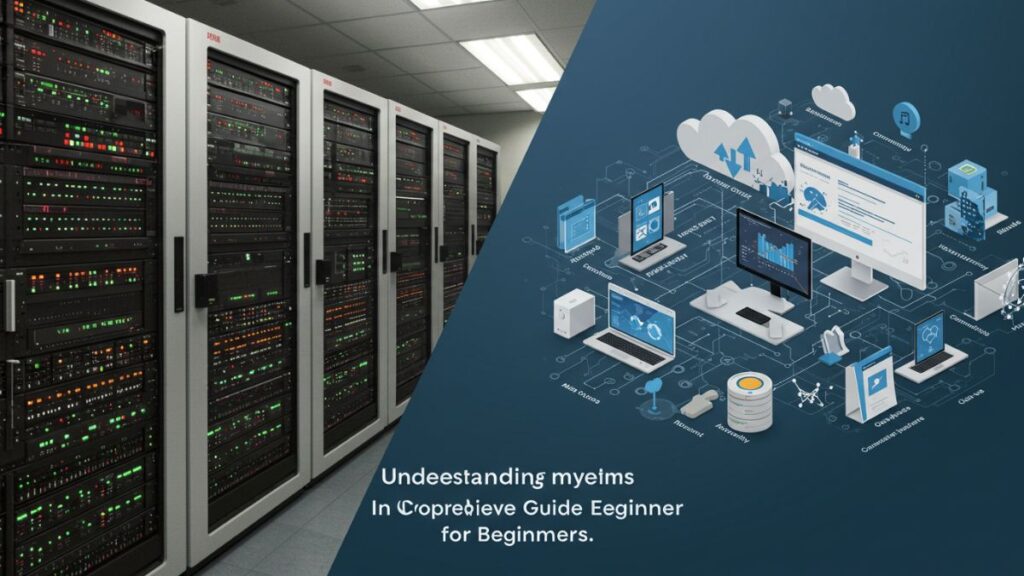Welcome to the world of ns mainframe. If you’re just starting your journey in IT or looking to refresh your knowledge, this guide will illuminate the essential aspects of NS Mainframe technology. With its robust capabilities and widespread applications, understanding NS Mainframes can open new doors for your career. Whether you’re curious about how it operates or eager to explore its benefits, you’ve come to the right place.
Benefits and Uses of NS Mainframe
NS Mainframe offers a range of benefits that make it invaluable to businesses. Its ability to handle vast amounts of data ensures organizations can efficiently process transactions and manage workloads.
One significant advantage is scalability. As companies grow, NS Mainframes can expand seamlessly without compromising performance. This flexibility helps meet increasing demand with ease.
Security is another crucial aspect. With robust security features, sensitive information remains protected against unauthorized access and cyber threats.
Reliability plays a vital role in its appeal as well. NS Mainframes systems are known for their uptime, ensuring continuous operation even during peak periods or unexpected failures.
Moreover, the platform supports various applications across different industries—from finance to healthcare—proving its versatility in meeting diverse business needs effectively.
Common Terminologies Used in NS Mainframe
Understanding the language of NS Mainframe is crucial for effective communication.
Another important term is “DB2,” a database management tool that helps in storing and retrieving data efficiently. It’s widely used for handling large volumes of information seamlessly.
“VSAM” stands for Virtual Storage Access Method. This is essential for organizing data sets on disk storage, making access quicker and more efficient.
The concept of “CICS” refers to Customer Information Control System. It’s vital for online transaction processing, allowing multiple users to interact with applications simultaneously without delays.
Remember “TSO,” or Time Sharing Option, which facilitates user interaction with mainframes through command line interfaces. Knowing these terms can significantly enhance your understanding and navigation within NS Mainframes environments.
How to Get Started with NS Mainframe?
Getting started with NS mainframe requires a few essential steps. First, familiarize yourself with the foundational concepts. Understanding how mainframes operate will lay the groundwork for your journey.
Next, choose an appropriate training program or online course tailored to NS mainframes skills. Many platforms offer resources ranging from beginner to advanced levels.
Setting up your environment is crucial as well. Consider installing emulation software that mimics the NS mainframe experience on your personal computer. This hands-on approach helps reinforce learning.
Engage in community forums and discussions related to NS mainframes topics. Networking with other learners can provide valuable insights and support.
Practice regularly by working on real-life projects or simulations. This practical application enhances understanding and builds confidence in using the system effectively.
Troubleshooting and Maintenance Tips for NS Mainframe
Maintaining an NS mainframe requires diligence and attention to detail. Regular monitoring of system performance is crucial. Utilize built-in diagnostic tools to identify potential issues before they escalate.
Keep software updated. Patches and updates often contain fixes for known bugs, enhancing stability and security. Set up a regular schedule for these updates to avoid unexpected downtime.
Documentation is key in troubleshooting. Maintain clear records of changes made, errors encountered, and resolutions applied. This can help streamline future troubleshooting efforts.
When faced with persistent issues, consider leveraging community forums or support channels related to NS mainframes technology.
Establish a routine backup process. Frequent backups safeguard your data against loss due to unforeseen circumstances or hardware failures, ensuring business continuity even when problems arise.
Conclusion:
As we explore the world of NS mainframe, it’s clear that this technology holds significant importance in various industries. Its ability to handle large volumes of data and transactions is unmatched. Organizations benefit from its reliability and scalability.
Embracing NS mainframe can open doors to robust solutions for complex challenges. With continuous advancements, staying updated becomes essential for maximizing potential.
The journey into the realm of NS mainframes may seem daunting at first, but with the right resources and guidance, anyone can navigate it effectively. Engaging with communities and forums adds value.
FAQ’S
What is an NS mainframe?
NS mainframe refers to a powerful computing system designed to handle vast amounts of data and support critical applications in business environments.
Who uses NS mainframes?
Organizations across various sectors utilize NS mainframes. This includes banks, insurance companies, government agencies, and large enterprises that require robust processing capabilities.
What are the key benefits of using an NS mainframe?
The primary advantages include exceptional uptime, ability to process large volumes of transactions concurrently, enhanced security features, and efficient resource management.


